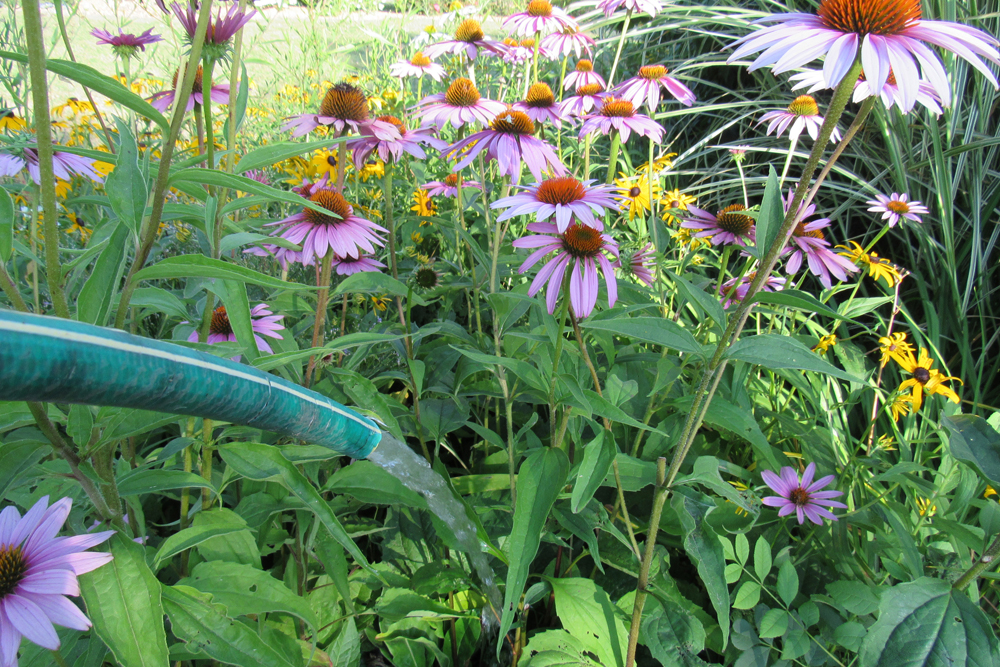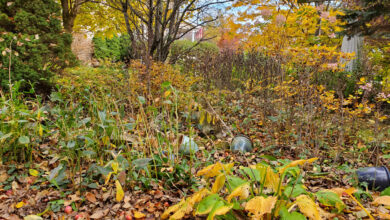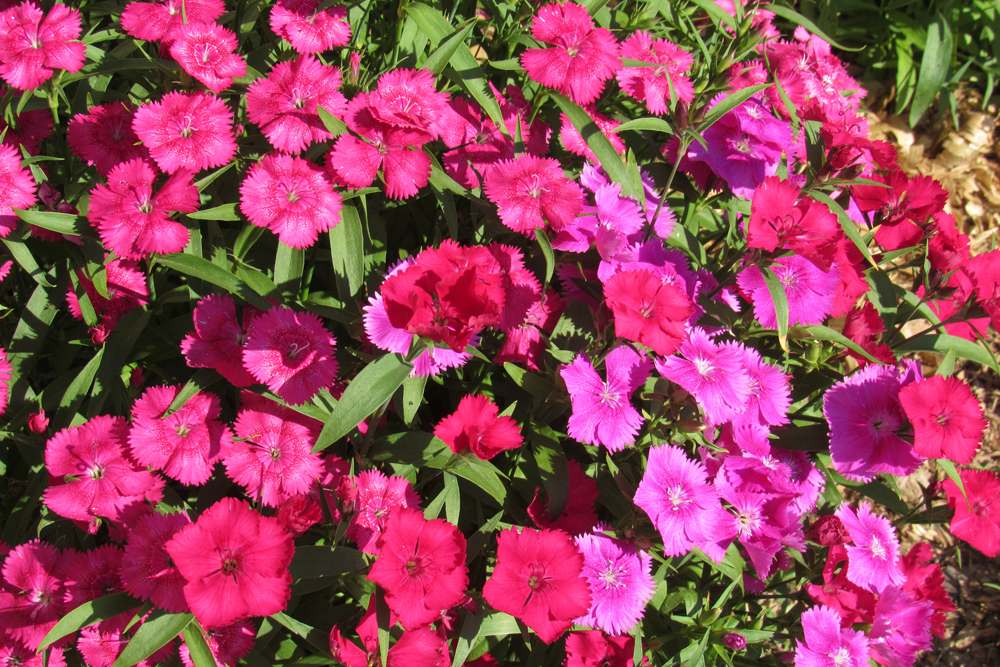Hot weather watering myth

There are many myths about gardening practices, and as you work your way through the warm and dry spells of summer, you will be faced with decisions about when to water. This brings to mind a common garden myth: You will scorch the leaves of plants by watering them in the midst of a hot sunny day.
You may have heard the warning not to water your plants in the heat of the mid-day hours. The argument is that water droplets which accumulate on leaves focus the sun’s rays like magnifying glasses and burn them. The reasoning continues that water also conducts heat on wet leaf surfaces, making them more likely to burn.
According to Linda Chalker-Scott, Ph.D., Extension horticulturalist and associate professor at Washington State University, this reasoning in unfounded. Chalker-Scott says go ahead and water in the middle of the day if you have plants that are showing signs of water stress. In fact, she warns that waiting to irrigate later in the day (a time when fungal pathogens can be encouraged by watering) or the following morning, could damage your plants and leave them vulnerable to disease.
Leaf scorch does have a number of causes, but watering and irrigating with fresh water is not one of them. This simple fact is backed up by hundreds of scientific publications which have examined foliar scorch, Chalker-Scott notes.
Actual causes of leaf scorch include suboptimal plant-water relations – such as salt entering a plant’s microhabitat. Salt comes from many sources including run-off from road salt and over-application of fertilizers, herbicides and insecticides. Plants can struggle to maintain optimal water balance when water contains salt, and leaves of plants can be affected by the problem. Additional causes of leaf scorch include drought, wind stress, high temperatures, reflected light and cold stress. Chalker-Scott notes that these environmental stresses are all linked to a decreasing water availability in leaves. The list of causes continues with poor root health, flooding, restricted space, and lack of foliar potassium. Potassium helps leaves regulate their stomatal openings and higher water loss is the result when potassium levels are low. Urea in some fertilizers can also burn foliage.
Preventing leaf scorch is accomplished by creating environmental conditions which are conducive to optimal root health: adequate moisture, oxygen, temperature and nutrients.
The lesson here is that wet foliage is not susceptible to sunburn. Make sure your site conditions are appropriate for root and shoot health and help to prevent drought problems. Any time your plants are experiencing drought stress, you should water them. That said, there is a best time of the day to water – early morning. Watering during the day can lead to water loss from evaporation; evening watering can encourage some fungal pathogens.
Finally, watch your usage of fertilizers and pesticides, especially if they contain sodium or chloride salts, Chalker-Scott advises. All these measures will help keep your plants and foliage healthy.






